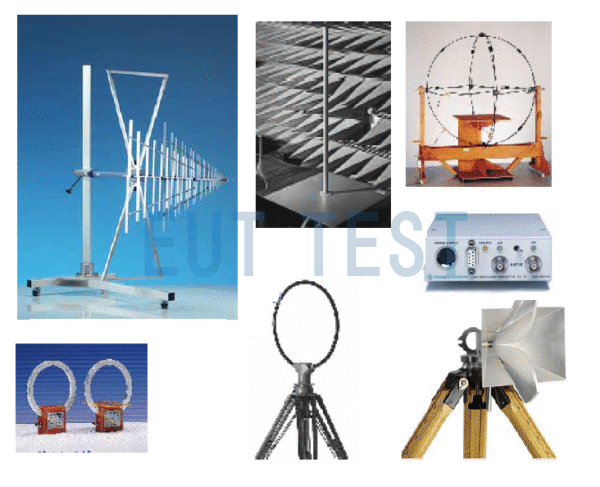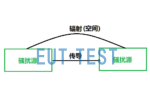Introduction:
What is an EMC antenna called?EMC antenna stands for Electromagnetic Compatibility Test Antenna and can also be referred to as an EMC measurement and test antenna. This article introduces common antenna classifications in the EMC testing industry, different antenna types, and explains how they receive RF signals or radiate RF signals as required by test standards. In addition, you can learn the principles of EMC antenna measurements and transmitting signals, and lastly, contact EUT TEST to get some auxiliary test instruments, anyone can complete the EMC certification test of electronic products.
Essential Uses:
EMC test antenna is a kind of test equipment used for EMC test of electronic products, specialized in EMC certification test of electronic products. Antennas are used to receive or transmit signals, so the EMC antenna is used to receive radiated interference emitted by electronic products to the outside world, and also used to emit an RF interference to the electronic product under test to assess the EMC compatibility of the product under test and certification testing.
EMC test antenna classification:
According to the electromagnetic compatibility EMC industry standard test requirements, EMC antenna is generally divided into EMI antenna and EMS antenna two kinds of antennas, the principle is to be used to receive RF signals or transmit RF signals, because all antennas can be used to transmit or receive, the difference is only in the receiving antenna's gain has a big or small, as well as receiving the attenuation multiplier size. So now we only need to distinguish between EMI antenna and EMS antenna.
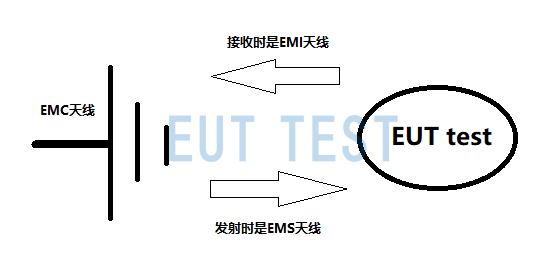
Two classifications of EMC antennas: EMI antennas and EMS antennas
EMC antenna type:
Because each antenna has a different test frequency, there are many types of antennas on the market nowadays, and the following EMC antennas with different structures are common in EMC testing:
- Dipole antenna
- Biconical antenna
- Horn Antenna
- Logarithmic periodic antenna
- Logarithmic spiral antenna
- Handheld Direction Finding Antenna
- Trolley antenna
- Test Antennas for Automotive Electronics
- Ring antenna
- tri-loop antenna
- Monitor and drive antennas
- Railroad locomotive antenna
- Helmholtz coil
And so on.
How does the EMC antenna receive signals?
EMC antennas use the principle of electromagnetic wave induction conversion to receive RFI signals from electronic products. When the external electromagnetic wave reaches the antenna, the antenna converts it into voltage and current signals through electromagnetic induction, and then supplies the EMI test receiver to process the data. However, it should be noted that the signal received by EMC antenna contains both electric field (E-field) and magnetic field (H-field) in the electromagnetic wave, so that we need to change the antenna's sensitivity to different fields, for example, sensitive to the electric field will be able to shield the magnetic field and receive the electric field signals, such as logarithmic periodic antenna; and sensitive to the magnetic field structure will be able to shield most of the electric field signals and receive the magnetic field signals, such as the loop antenna, in a word! In short, the structure of an antenna determines its sensitivity to different fields.
The different difference between signals received by an electric field antenna and a magnetic field antenna:
Electric field antenna: Generates a potential difference by inducing the electric field component of an electromagnetic wave through a conductor.
Magnetic field antenna: Using a ring structure to sense changes in the magnetic field and generate an induced current.
Why do EMC antennas measure horizontal and vertical polarization directions separately?
To talk about antenna polarization, let's first look at the structure of a standard log-periodic antenna:
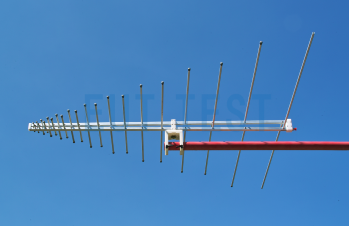
Standard log-periodic EMC antenna
From the above figure, we can see that the structure of the log-periodic antenna tends to be in a plane, we know that the electromagnetic field is a vector, which has both size and direction, when the position of this EMC antenna is fixed, it can only measure the signal that happens to be coupled to the antenna at this time; we also know that the electromagnetic waves are derived from each other and distributed orthogonally, so if we measure the signal in one direction only, we will miss the signal of the perpendicular direction of the signal will be missed. In order to avoid this problem, nowadays the electromagnetic compatibility test standards require the measurement of RF radiation test data of vertical polarization and horizontal polarization respectively, and special standards also require that the DUT be rotated 360 degrees to obtain a data, which is based on two polarizations, so you need to let the DUT turn around and measure it once in vertical polarization; and then repeat the same operation again in horizontal polarization. Finally, use the computer on the upper computer software in a frequency point to maximize the output of the final data to maintain, so that a complete measurement of the RF interference signal of electronic products.
Does the EMC antenna radiate?
Whether the EMC antenna radiates or not is categorized into the following two cases:
When the antenna is used for EMI measurements, the antenna itself is not radiating because it is receiving signals from the environment, and as long as the noise at the bottom of the environment is low, the antenna will not be measuring any signals, and so there is no radiation to the human body.
When the antenna is used for immunity EMS measurement, an RF signal source and power amplifier will be placed at the front end of the EMC antenna, at this time the antenna is radiated, at this time it is strictly prohibited for any personnel to approach or stand within any range of the front end of the antenna!
How does an EMC tester control the immunity measurement process? We then need to place the whole set of equipment in the radio wave dark room or shielded room, they are simulated a free-field space, outside the laboratory theoretically there will be no RF signal leakage, we can feel at ease to sit outside the laboratory to perform EMS measurements on electronic products.
EMC antenna factors and antenna coefficients
EMC antenna factor and antenna coefficient main role is used for EMI antenna correction test data, because the antenna receiving signal is self attenuation, and it also converts the RF interference to 50 ohm signal, so the antenna factor is needed to correct the measurement data, in order to get the real RF radiation emission value.
Difference between EMC probe and EMC antenna:
Above we have learned some classifications and testing principles of EMC antennas, some customers asked thatEMC Near Field ProbeThey are also divided into electric field probes and magnetic field probes, are they different from antennas? The answer is that EMC antennas measure the electromagnetic field in the far field, while near-field probes measure the electromagnetic field in the near field, and they have different testing principles.
EMC antenna related test instruments:
Whether to do EMI or EMS testing, when we select the antenna, we need to choose some test instruments to match the EMC antenna according to the test application to complete the electronic product industry standard electromagnetic compatibility measurement requirements. Including EMI receiver, antenna tower, antenna bracket, coaxial RF cable, radio wave dark room and other test instruments.
EMC antennas and EMI receivers:
EMI Test ReceiverIt is used to receive the 50 ohm voltage value output from the EMC antenna and integrate the display of full-band test results on the EMI test software. This allows engineers to visualize whether the radiated interference of the electronic product under test exceeds industry standard limit requirements.
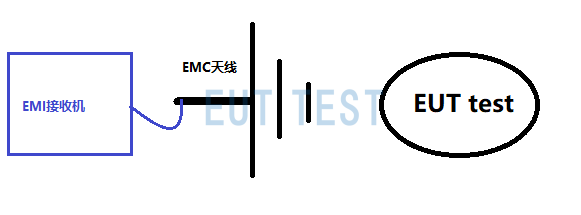
EMI Receiver Equipment Required for EMC Antennas
EMC antenna with coaxial RF cable:
Between the EMC antenna and the EMI test receiver described above, it is necessary toCoaxial RF cablesTransmission and connection, the coaxial cable transmits the RF voltage signal received by the EMI antenna using a 50 ohm characteristic impedance so that the test results can be obtained at the EMI receiver.
In addition, some users with special needs may require additional instruments such as attenuators and RF switches.
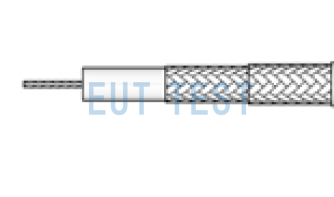
EMC antennas require only coaxial RF cables
EMC antenna with EMC antenna mount:
As you can see from the figure below, an EMC antenna is simply a structure consisting of multiple antennae rods, which need to be supported when used in a dark room in the airwaves.EMC Antenna Tripodis the optimal choice, tripods are inexpensive and easy to move.
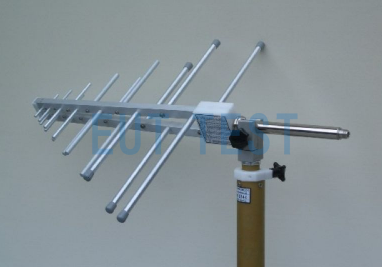
EMC antenna supported on an EMC tripod
In addition, when it is necessary to measure the height from 1 meter to 4 meters, we also need to purchase the EMC antenna tower that can automatically adjust the antenna height and angle, as shown in the figure below, the EMC antenna can be moved freely from 0-4 meters on such antenna tower, and it is all controlled by the software, and it is also possible to change the tilt angle of the EMC antenna.
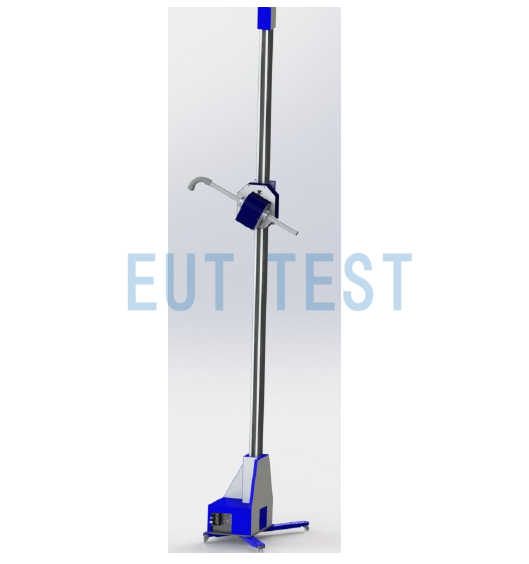
EMC antenna changing height and tilt angle on an EMC antenna tower

